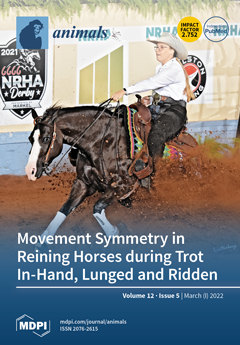Sciurus vulgaris (the Eurasian red squirrel) is native to Europe and Asia, but due to habitat destruction or fragmentation, interspecific competition, and infectious diseases, especially in European island areas the species finds itself at the brink of extinction. The repopulation of such bare
[...] Read more.
Sciurus vulgaris (the Eurasian red squirrel) is native to Europe and Asia, but due to habitat destruction or fragmentation, interspecific competition, and infectious diseases, especially in European island areas the species finds itself at the brink of extinction. The repopulation of such bare habitats requires healthy squirrel specimens, either translocated from other wild habitats or reintroduced to the wilderness following captive breeding. Captivity, nonetheless, has shown an immense capacity to reshape the structure of wild species’ microbiota, adapting it to the less diverse diet and fewer environmental challenges. Therefore, assessing the differences between “wild” and “captive” microbiota in this species could elucidate if special living conditions are needed in order to augment the survival rate of specimens reintroduced into the wild. Furthermore, the microflora profile of the normal flora of healthy red squirrels raised in captivity could support clinicians in addressing infectious diseases episodes and also raise awareness on the zoonotic risk. Hence, this study aimed at documenting the bacterial species carried by
S. vulgaris, disclosing overall similarities and variability patterns of the microbiota identified in individuals from two different living environments. We anticipated that the bacterial community would be less diverse in individuals raised in captivity, owing to their restrictive diet and to unchanging conditions in the enclosure. We also hypothesized that there would be a higher prevalence of zoonotic microorganisms in the captive animals, due to the proximity of humans and of other domestic species. To test this, samples (
n = 100) were taken from five body regions of 20 red squirrels, both free-ranging and bred in captivity, processed by classical microbiology techniques, and further identified by biochemical assay (VITEK
®2 Compact System). A relatively poor bacterial community, comprising 62 bacterial strains belonging to 18 species and 8 different genera, was identified. Most of these microorganisms were reported for the first time in
S. vulgaris. With no discrimination between living environments, the highest prevalence (
p < 0.001), was registered in
Staphylococcus sciuri (60%; 12/20), followed by
Escherichia coli (45%; 9/20) and
Bacillus cereus (35%; 7/20). The results suggest unremarkable differences in diversity and richness of the resident aerobic microbiota of
S. vulgaris, in relation to the living environment.
Full article






